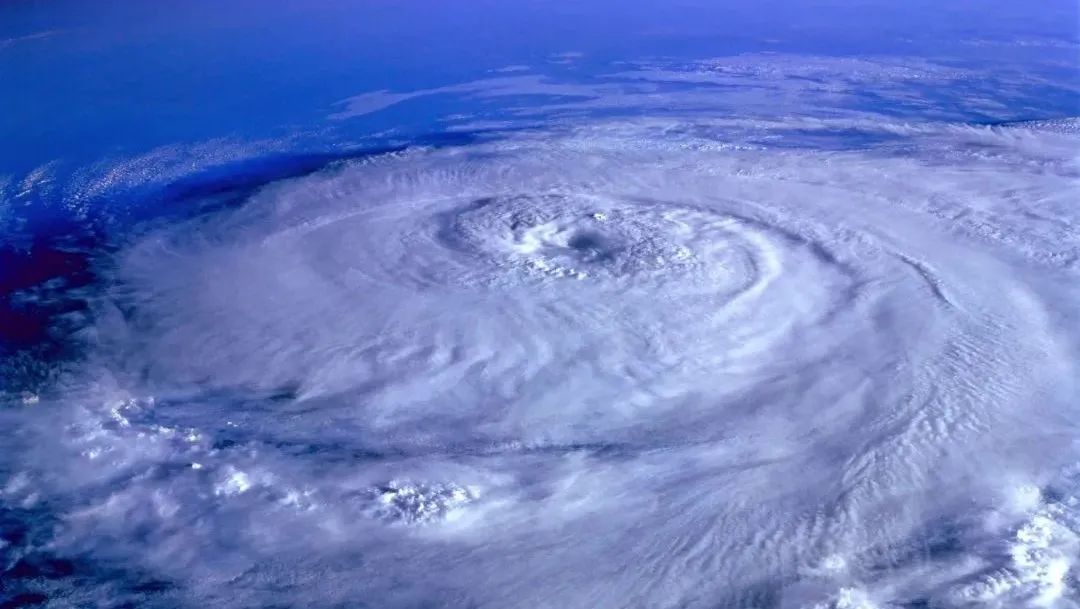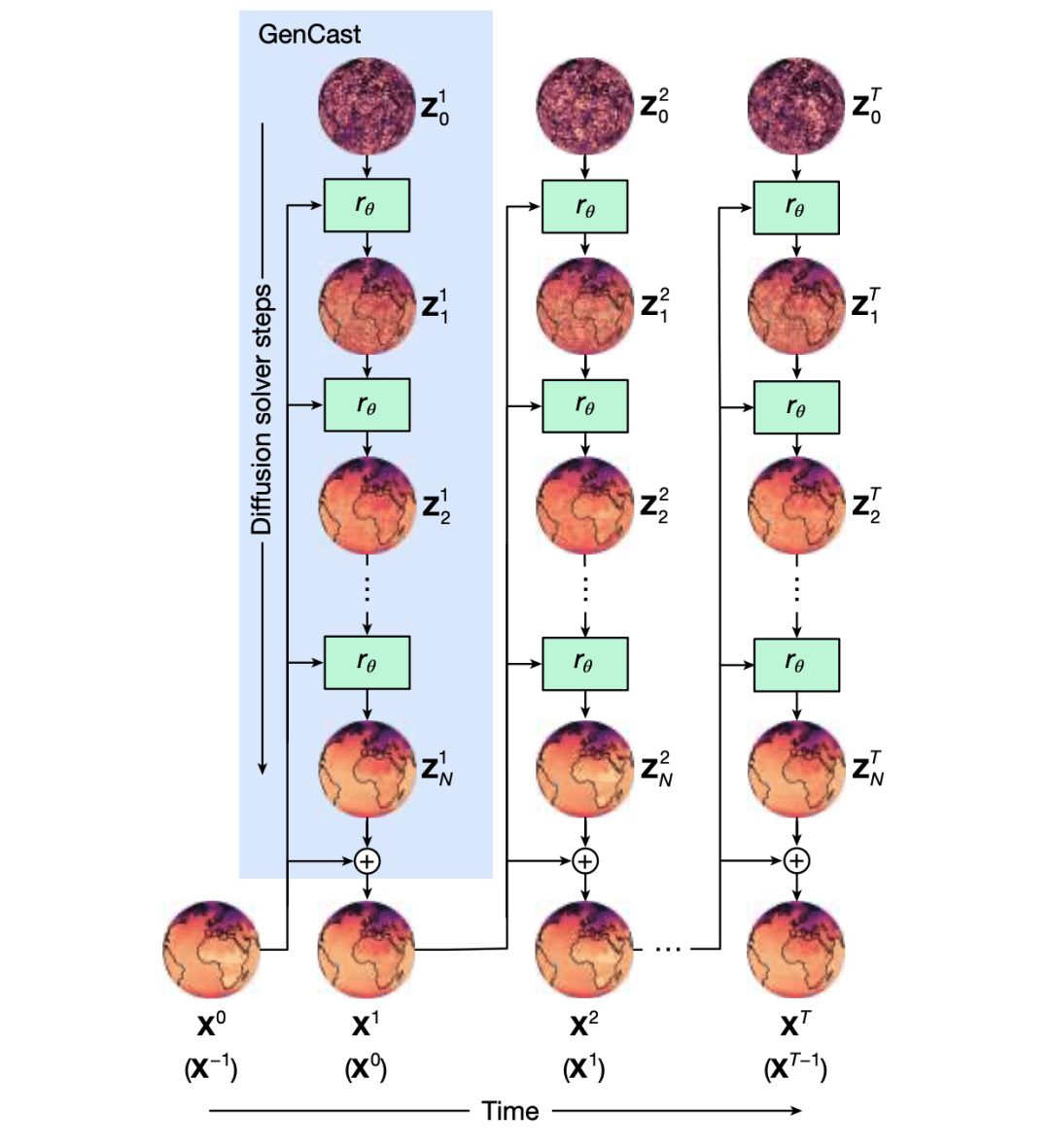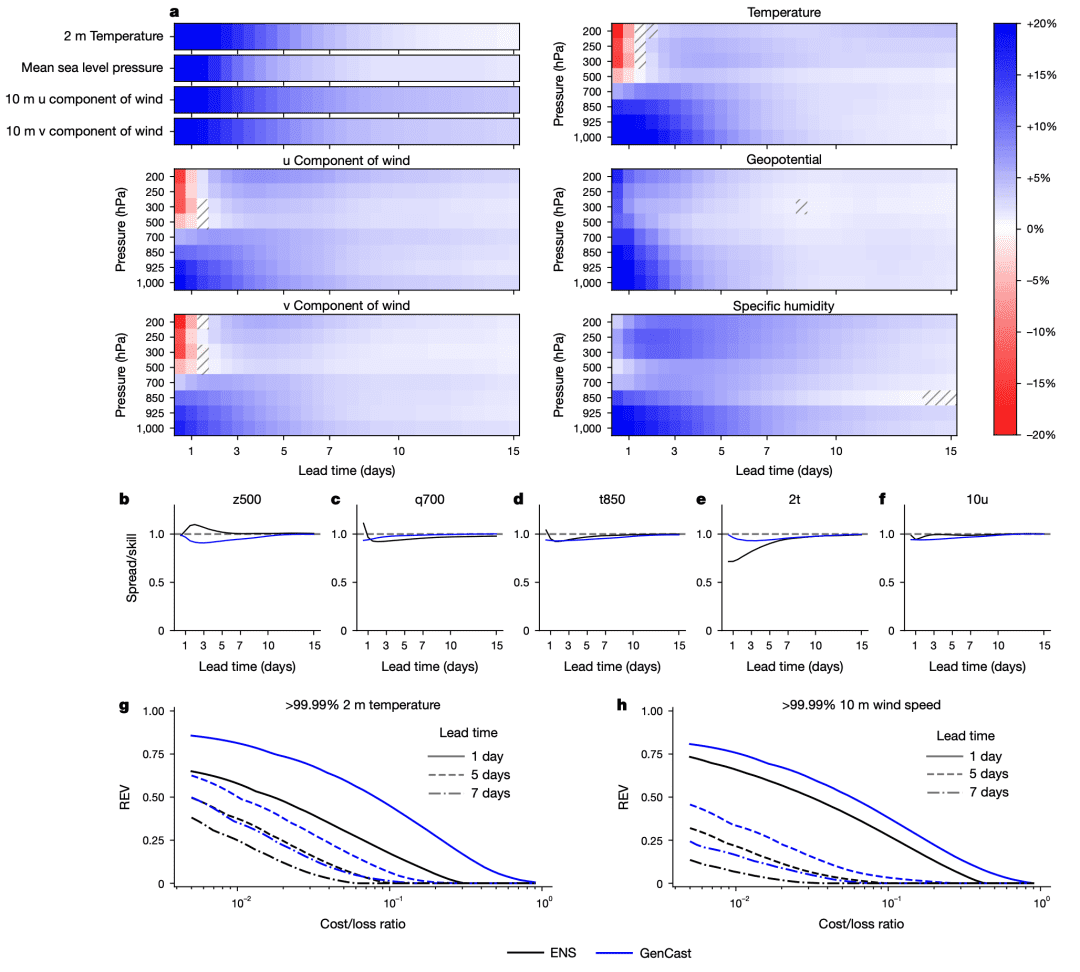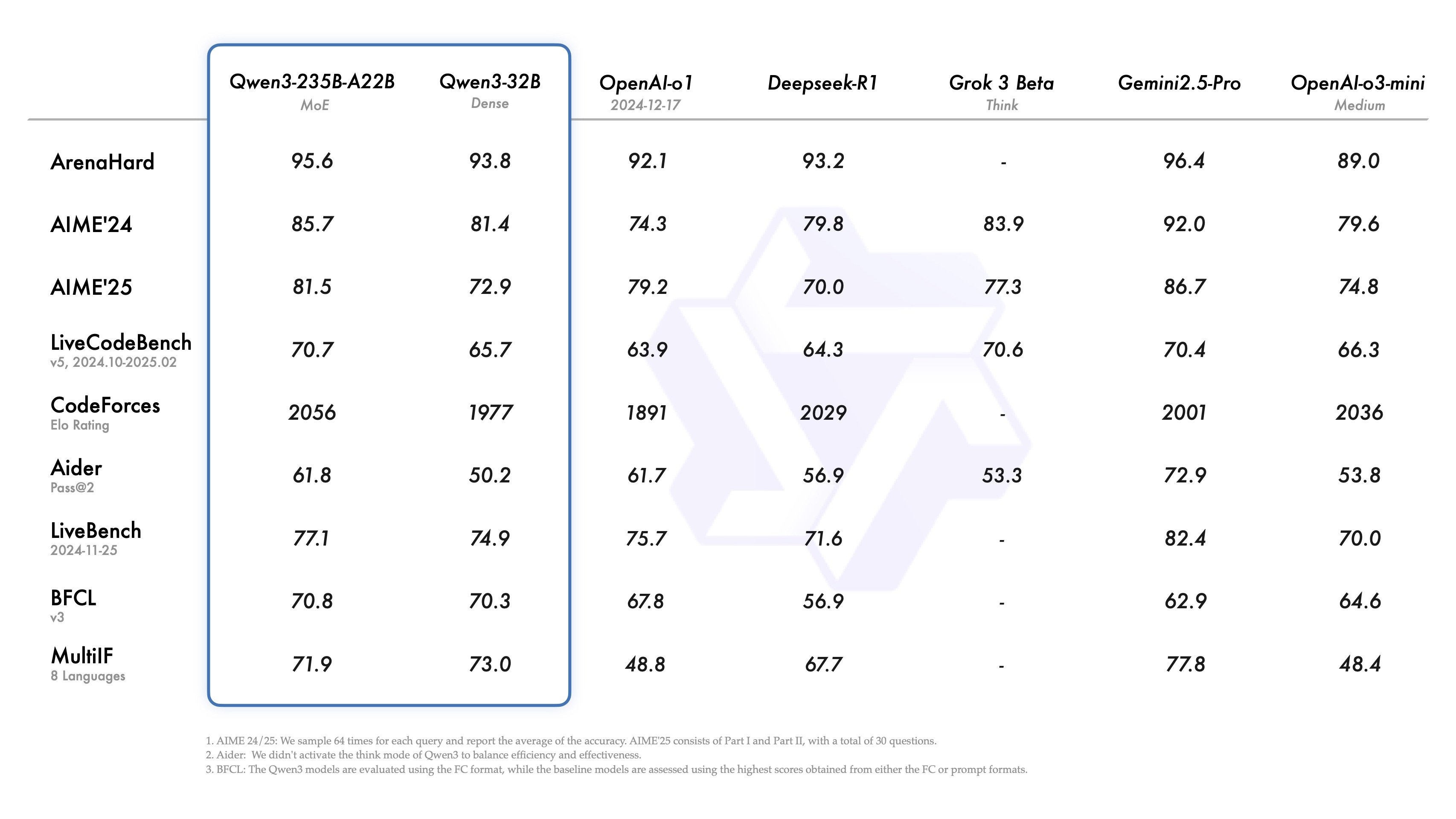Nature weighs in: 8 minutes to predict 15 days of global weather, DeepMind AI beats the world's most advanced weather forecasting system

Data from the World Meteorological Organization (WMO) shows that theOver the past 50 years, an average of one weather-, climate- or flood-related disaster has occurred every day, resulting in 115 deaths and $202 million in economic losses every day.
Therefore.Building a more accurate weather forecasting systemthat will help save millions of lives and reduce trillions of dollars in economic losses.of great significanceThe
However, traditional weather forecasting relies on numerical weather prediction algorithms (NWP), which have high computational complexity and time-consuming model construction, making it difficult to generate forecasts quickly. Machine Learning-based Weather Prediction (MLWP) has made breakthroughs in efficiency and single forecast accuracy, but it is not as good as the NWP integrated forecast system in quantifying forecast uncertainty and dealing with complex spatial and temporal correlations.
Today.GenCast, an artificial intelligence (AI) model developed by a team of Google DeepMind researchers, has taken weather forecasting to a whole new level of accuracy and efficiency--
GenCast is able to generate a set of stochastic 15-day global forecasts in less than 8 minutes, in 12-hour time steps, with a resolution of 0.25°, covering more than 80 surface and atmospheric variables, and outperforming the best current global medium-range forecasts on 97.21 TP3T of the evaluation metrics (1320 metrics in total) - the European Center for Medium-Range Weather Forecasts (ECMWF) ensemble (ENS) - with better marginal and joint forecast distributions. The European Center for Medium-Range Weather Forecasts (ECMWF) ensemble forecast (ENS) is the best medium-term forecast in the world today in 97.21 TP3T evaluation metrics (1320 metrics in total), and has better margins and joint forecast distributions.
In addition, GenCast is more effective in forecasting extreme weather (e.g., high temperatures, strong winds), tropical cyclone routes, and wind energy production.
Related Research Papers to "Probabilistic weather forecasting with machine learning" has been published in the prestigious scientific journal Nature Up.
GenCast: faster, more accurate forecasts of future weather

Fig. |Schematic diagram of GenCast generating weather forecasts.

Figure | GenCast's marginal forecast distribution is skillful and well-calibrated.

Figure|GenCast outperforms ENS in regional wind and tropical cyclone forecasting.
GenCast is a new probabilistic weather forecasting model that generates a range of possible weather scenarios using a conditional diffusion model.. Its core capability lies in modeling the conditional probability distribution of future weather states, i.e., generating future forecasts based on current and previous weather states. This approach allows GenCast to provide global 15-day probabilistic weather forecasts with greater speed and accuracy.
Specifically.GenCast's architecture consists of three modules: encoder, processor and decoder.The The encoder maps the initial weather state onto a spherical grid that has been finely divided six times, and the processor passes the graphical transformer Complex spatio-temporal correlations are captured between grid nodes, while the decoder remaps the results back to the global latitude/longitude grid to generate the final weather forecast.
In addition, the team trained GenCast with ERA5 reanalysis data, a dataset that contains the best weather estimates analyzed globally over a 40-year period, ensuring the model's ability to generalize and provide a deep understanding of historical weather patterns.
To assess GenCast's actual performance, the research team benchmarked it against current state-of-the-art systems and models. To ensure a fair comparison, all models were initialized based on ERA5 data with a uniform resolution of 0.25°.
In experiments against other systems, GenCast generates weather samples that are closer to actual observations, and the forecast distribution covers a wide range of possible scenarios, providing users with a more comprehensive understanding of potential risks. For example, GenCast's forecast shortly before Typhoon Hobbes made landfall in Japan was very clear, with a spherical harmonic power spectrum that was very close to the true ERA5 ground truth over the 1-15 day forecast period.
After that.The research team evaluated the overall forecasting skill, calibration, and performance of GenCast and ENS for extreme weather forecasting, i.e. marginal forecast performance. Marginal forecasts, as specific forecasts of weather conditions at a given time and place, are at the core of daily weather services.
GenCast has demonstrated strong performance advantages in this area. It generates forecast distributions that more accurately reflect possible weather scenarios, not only by providing forecasts of variables such as temperature, wind speed and barometric pressure that are highly compatible with real data, but also by effectively quantifying forecast uncertainty through improved probabilistic calibration.
Specific studies have shown thatGenCast outperforms ENS in forecasting marginal distributions of multiple meteorological variablesIn a test covering 1320 assessment objectives, GenCast achieved higher skill scores (CRPS) at 97.2%, particularly effective in short-term forecasts (1 to 5 days).
Meanwhile.GenCast also excels in forecasting extreme weather such as high temperatures and strong winds.. The study used Brier skill scores and relative economic value (REV) curves to measure model performance. The results show that GenCast significantly outperforms ENS in forecasting high temperature (99.991 TP3T quantile) and extreme low temperature (0.011 TP3T quantile) events.
In addition.GenCast's Marginal Distribution Forecasts Demonstrate Good Calibration, which means it can accurately identify possible errors or biases in the forecast and provide users with more reliable weather decision support.
In addition to marginal forecasts, GenCast has shown impressive performance in joint forecasts. Joint forecasts focus on the spatial and temporal correlations among weather variables, which is crucial for capturing the dynamics of global weather systems. For example, in tropical cyclone track forecasting, the path of a tropical cyclone is not only dependent on a single variable, but also needs to take into account multiple levels of atmospheric interactions. GenCast is able to generate spatially and temporally consistent weather samples that accurately capture these complex correlations to generate accurate forecasts.
In particular, the study analyzes the performance of GenCast in the case of Typhoon Hibiscus. The typhoon track forecast shows that GenCast's uncertainty assessment range covers more possible scenarios, and its error in track position prediction is significantly lower than that of ENS. More importantly, GenCast's uncertainty range converges with shorter forecast time, providing decision makers with more accurate information on landing time and location.
In addition, in regional wind forecasting, GenCast converts 10-meter wind speed data into wind energy output, which improves the forecast accuracy by 20% compared to ENS, especially on short time scales, and provides new possibilities for renewable energy scheduling.
Although GenCast has achieved a double breakthrough in accuracy and efficiency, there is still room for further optimization. For example, the resolution could be improved to match future upgrades of the ENS system, or the computational cost could be reduced through distillation. In addition, fine-tuning with operational data or incorporating more traditional NWP initial condition processing methods could significantly increase its usefulness.
How is AI reshaping the future of climate forecasting?
AI has always had high hopes in the field of weather forecasting as "a faster and cheaper alternative to improve extreme weather forecasting".In addition to Google, technology companies and universities, including Huawei and Tsinghua University, have made significant progress in this direction.
July 2023The Pangu Weather (Pangu-Weather) model developed by Huawei Cloud made it onto the NatureIt uses 39 years of globally reanalyzed weather data as training data, and its forecast accuracy is comparable to the IFS, the world's best numerical weather prediction system, and more than 10,000 times faster than the IFS at the same spatial resolution.
Published concurrently in Nature Another paper on the subject describes the NowcastNetThe model combines physical laws and deep learning to forecast precipitation in real time. nowcastNet performs well in proximity forecasting, and based on radar observations, it can forecast high-resolution precipitation over an area of 2048 km × 2048 km up to 3 hours in advance. Based on radar data, NowcastNet can forecast high-resolution precipitation over an area of 2048 km × 2048 km up to 3 hours in advance.
November 2023Google DeepMind Launches GraphCast, a Machine Learning-Based Weather Forecasting ModelThe model can forecast hundreds of weather variables for the next 10 days in less than a minute at a global resolution of 0.25°, significantly outperforming traditional weather forecasting methods and performing well in forecasting extreme events. The research paper has been published in the leading scientific journal Science Up.
In March 2024, the Google Research Flood Forecasting team developed an AI model trained with data from 5,680 gauges to forecast daily runoff from ungauged watersheds within seven days.The model outperformed GloFAS, the leading global flood warning system at the time, in same-day forecasting and in forecasting the 1-in-5-year extreme weather event.Related research papers have been published in leading scientific journals Nature Up.
July 2024The Google Research team and its collaborators have launched NeuralGCM, a weather forecasting and climate simulation model.The accuracy of the model is comparable to that of the ECMWF model for 1-15 day short-term weather forecasts and outperforms existing models for cyclone forecasts and trajectory simulations. With the inclusion of sea level temperature, the model's 40-year climate forecasts are highly consistent with the global warming trend. NeuralGCM can generate 22.8 days of atmospheric simulations in 30 seconds of computation time. The research paper has been published in the leading scientific journal Nature Up.
It is believed that in the near future, AI-driven weather forecasting will play a greater role in disaster warning, energy planning and climate adaptation with faster speed and higher accuracy, and provide a more powerful tool for mankind to cope with the increasingly complex climate challenges.
© Copyright notes
Article copyright AI Sharing Circle All, please do not reproduce without permission.
Related posts

No comments...




